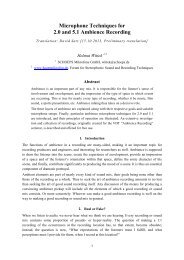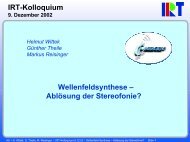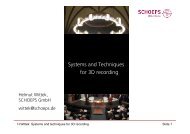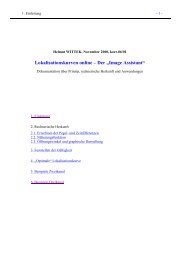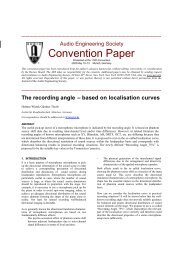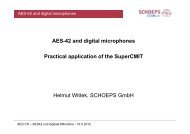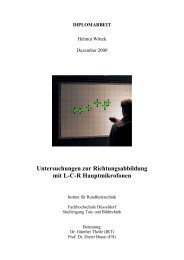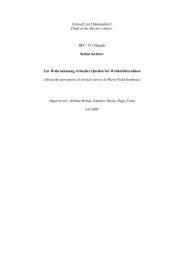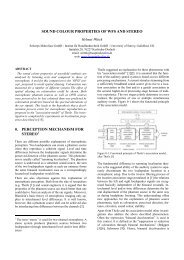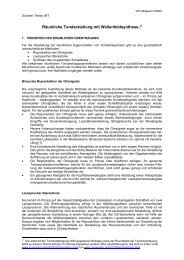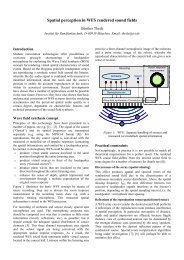on the localisation in the superimposed soundfield - Hauptmikrofon ...
on the localisation in the superimposed soundfield - Hauptmikrofon ...
on the localisation in the superimposed soundfield - Hauptmikrofon ...
You also want an ePaper? Increase the reach of your titles
YUMPU automatically turns print PDFs into web optimized ePapers that Google loves.
8<br />
2. .The “phantom source”<br />
An important special case of localisati<strong>on</strong> <strong>in</strong> <strong>the</strong> <strong>superimposed</strong> sound field is if several<br />
sound events are mapped to a comm<strong>on</strong> auditory event, so that its locati<strong>on</strong> does not<br />
corresp<strong>on</strong>d to <strong>the</strong> <strong>on</strong>es of <strong>the</strong> sound sources. This case is referred to as a “phantom<br />
source”, s<strong>in</strong>ce an auditory event is perceived to be at a positi<strong>on</strong> where no sound source<br />
is actually located.<br />
Yet, bear<strong>in</strong>g <strong>in</strong> m<strong>in</strong>d <strong>the</strong> def<strong>in</strong>iti<strong>on</strong>s given above, <strong>the</strong> term “sound source” cannot be<br />
utilised for describ<strong>in</strong>g an auditory event. In <strong>the</strong> literature, a phantom source is thus<br />
also <strong>in</strong>terpreted as an imag<strong>in</strong>ary, fictitious sound source, with <strong>the</strong> help of which <strong>on</strong>e<br />
tries to describe <strong>the</strong> physical side of <strong>the</strong> localisati<strong>on</strong> process. One proceeds <strong>on</strong> <strong>the</strong><br />
assumpti<strong>on</strong> that, <strong>in</strong> pr<strong>in</strong>ciple, a phantom source c<strong>on</strong>stitutes a substitute sound source<br />
produc<strong>in</strong>g <strong>the</strong> same ear signal characteristics <strong>in</strong> its sound field as it would <strong>in</strong> a<br />
corresp<strong>on</strong>d<strong>in</strong>g <strong>superimposed</strong> sound field at <strong>the</strong> same listen<strong>in</strong>g positi<strong>on</strong>.<br />
As will be shown below, <strong>in</strong> many cases serious objecti<strong>on</strong>s have to be raised with<br />
regard to this assumpti<strong>on</strong> (see Secti<strong>on</strong>s 2.2 and 4.2). Never<strong>the</strong>less, for <strong>the</strong> time be<strong>in</strong>g,<br />
<strong>the</strong> term “phantom source” shall be used to characterise particular sound field<br />
c<strong>on</strong>stellati<strong>on</strong>s <strong>in</strong> <strong>the</strong> usual manner. Unless specified o<strong>the</strong>rwise, “phantom source”<br />
specifically refers to <strong>the</strong> sound field produced by two coherent signals that are played<br />
back over a c<strong>on</strong>venti<strong>on</strong>al, loudspeaker-based stereo set-up (see Figure 1).<br />
Figure 1:<br />
C<strong>on</strong>venti<strong>on</strong>al, loudspeaker-based stereo set-up<br />
This special case of localisati<strong>on</strong> <strong>in</strong> <strong>the</strong> <strong>superimposed</strong> sound field is not just of<br />
particular relevance to <strong>the</strong> electroacoustic reproducti<strong>on</strong> of spatially distributed sound



